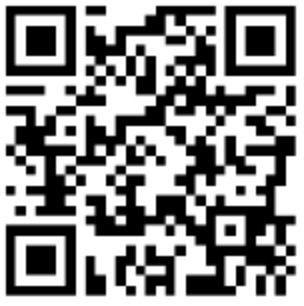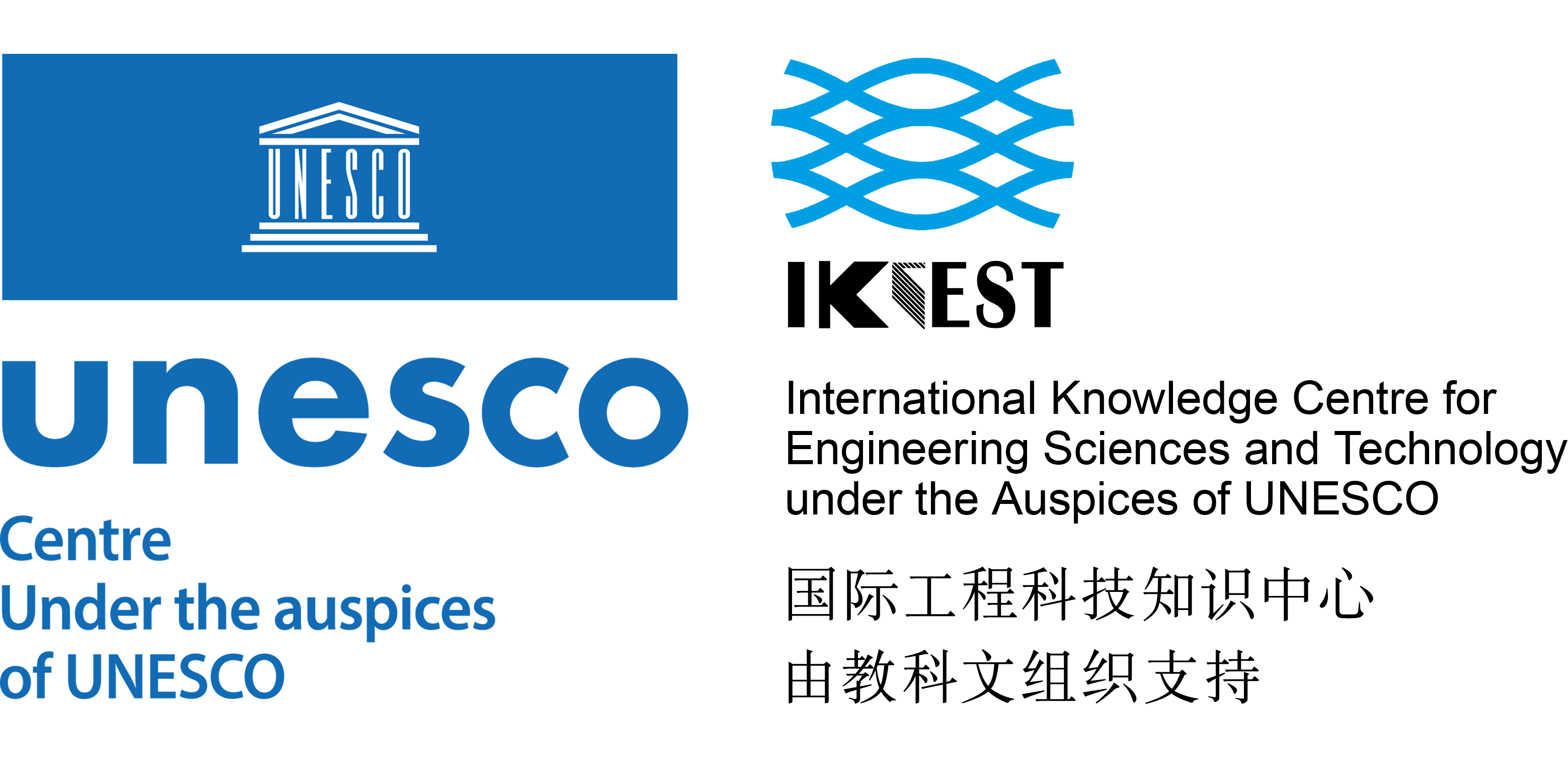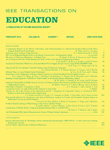Journal
Please choose volume & issue:
-
Education Software Development for Undergraduate Exposition on the Use of Quantum Fourier Transforms in Signal Analysis
Keywords:QubitLogic gatesTrainingQuantum stateQuantum circuitProgramming professionNoiseDiscrete Fourier transformsDigital signal processingSignal analysisSignal AnalysisLearning SoftwareQuantum Fourier TransformInteractivePaired T-testSignal ProcessingUndergraduate StudentsEffect Of NoiseSingle SessionQuantum ComputingDigital Signal ProcessingStudent LearningStudent PerformanceFrequency ComponentsEducational TechnologySound Pressure LevelQuantum StateQuantum InformationPost-intervention AssessmentSpeech SignalQuantization NoiseQuantum SimulationQuantum CircuitJust Noticeable DifferenceClassical ComputerIndustrial ToolsQuantum GatesParseval’s TheoremCompression AlgorithmVirtual LaboratoryJava-digital signal processing (J-DSP)quantum computing (QC)quantum Fourier Transform (QFT)quantum toolsqubitsspeech analysisAbstracts:Contribution: quantum computing (QC) has potential for significant speedup in data and signal analysis in industrial, academic, and government applications. This article introduces new software tools integrated in the online Java-digital signal processing (J-DSP) simulation platform for undergraduate (UG) exposition to QC.Background: In response to national calls for early UG exposition to QC, we develop new J-DSP functionality and quantum Fourier Transform (QFT) tools. In addition, we describe the deployment and evaluation of a hands-on online exercise to introduce UG students to QFT-based signal analysis-synthesis.Intended Outcomes: The primary goal is to expose students to QC by leveraging the new interactive QFT tools in J-DSP. These tools enable rapid exploration of key concepts, such as QFT resolution, qubit precision, and noise effects in signal analysis. Students use the QFT functions in an online QC exercise that we designed.Application Design: The J-DSP interactive online education tools are designed for quick UG exposition to QC. A QFT exercise on speech analysis-synthesis is designed and evaluated. UG Students explore in single hands-on exposition session simple compression steps, including QFT peak picking used in audio coding applications. The QFT functions are designed for quick deployment and UG exposition outside the classroom.Findings: Evaluations of the QFT tools are conducted with pre and post-assessments and interviews examining satisfaction with the system and impact on knowledge acquisition. To analyze the impact of this supplementary QC exposition tool, students were recruited from two senior UG signal processing classes and from a summer research experience for UG (REU) cohort. A paired samples t-test was used to examine changes from pre to post-assessments. The students indicated increased level of understanding at post-assessments. However, a few students reported having at times difficulty with the system. However, the majority of the participants indicated the program was suitable for introductory/exposition sessions.Key Insight: Generally, students found the J-DSP quantum tools effective and easy to use and suggested that adding more qualitative video materials and applying QC to other digital signal processing (DSP) functions would further enhance the learning experience.
-
Analysis of the Impact of Online Project-Based Flipped Learning Classroom Applied to Embedded Systems Education
Keywords:Embedded systemsVideosPandemicsTrainingProblem-solvingEducational coursesReal-time systemsSensorsSensor systemsLearning systemsFlipped ClassroomProject-based LearningEmbedded SystemFlipped LearningFlipped Learning ClassroomPost Hoc TestPandemicEffective ApproachAcademic PerformanceK-meansIndividual InterviewsOnline LearningStudent ParticipationSupport ToolChanges In ParticipantsAbility Of StudentsGames-Howell Post-hoc TestFlipped Classroom ApproachCritical ThinkingStudent EngagementCritical Thinking SkillsThinking SkillsPre-recorded VideoDifferences In StudentsFinal ProjectController Area NetworkLearning Management SystemIn-class ActivitiesStudent QuestionsTraditional Teaching MethodsCoronavirus pandemicembedded system educationonline practice class curriculumonline project-based flipped learning classroom (OPBFLC)Abstracts:Contributions: This study analyzes the impact of the online project-based flipped learning classroom (OPBFLC) approach in embedded systems education courses and provides guidelines for educators who wish to conduct practice-oriented education in an online environment. Background: Traditional practice classes were mainly conducted in person. However, the COVID-19 pandemic necessitated a sudden shift to online learning. As a result, the flipped-learning classroom (FLC) approach became popular as an effective method in the online environment. However, the effectiveness of this approach can vary depending on student participation, making motivation essential for learning. To solve this problem, project-based FLCs (PBFLCs), which combine project-based learning (PBL) that presents clear learning objectives through projects, and FLC is gaining attention as an alternative. Despite this potential, few studies have applied PBFLC to online embedded systems education and analyzed its effectiveness. Application Design: The entire class was organized as an OPBFLC in an online environment and had the following features: 1) providing theoretical training and practical modeling videos; 2) interacting through real-time video platforms; 3) utilizing channels of participation through real names and anonymity; and 4) assigning two projects (midterm and final) on the same topic. Intended Outcome: This study aims to analyze the educational effectiveness of the OPBFLC through quantitative factors, such as student participation, self-directed learning (SDL) ability, academic achievement, and satisfaction with classroom support tools, as well as qualitative factors obtained through interviews. Methodology: Changes in participation and SDL ability were measured using pre- and post-class surveys, as well as Levene’s t-test. Academic achievement was analyzed by dividing students into three groups using K-means clustering and then analyzing the average scores of each group using Welch’s one-way ANOVA and Games-Howell post hoc tests. Students’ satisfaction with the support activities and tools was evaluated using Welch’s one-way ANOVA and the Games-Howell post-hoc test. Additionally, individual interviews were conducted with students who voluntarily participated after the class ended for approximately one hour to gather qualitative feedback. Findings: The OPBFLC-based curriculum for embedded systems education improved student participation, SDL ability, and academic achievement, and showed potential to mitigate the academic polarization that often occurs in FLC. In addition, students were found to prefer nonreal-time support tools over real-time support tools.
-
Concept Maps and Open Learner Models in a Computer Networking Course
Keywords:ReviewsSurveysTelecommunicationsNavigationPeer-to-peer computingMonitoringDistance measurementComputer science educationComplexity theoryVisualizationConcept MappingOpen Learner ModelInteractiveUse Of SystemsConceptual KnowledgePerceived UsefulnessLearning ContentLearning PlatformActivity LogLearning OutcomesConceptual UnderstandingMultiple-choice QuestionsStudent EngagementSystem UsabilityUse Of The ConceptQuestionable PracticesYears Of ActivityLearning ProgressPractical ExercisesPeriod 2Exam PerformanceVideo LecturesUse Of MapsConcept PairsCourse Of OutcomesPeriod 3Introductory CourseTarget ConceptRound Of The StudyPeriod 1Adaptive learningcommunication engineering educationcomputer science educationhybrid learningstudent experimentsAbstracts:Contribution: We explored the effects of using concept maps for the instruction of a college-level telecommunications course, as both the “backbone” structure of the traditional lectures and a navigational support feature within an online independent practice support system, on students’ final learning gains and engagement with the learning content.Background: The usage of concept maps as an instructional aid has proved beneficial across a range of disciplines; however, studies that support this in a computer science education context and by combining holistic data coming from both online activity logs and the physical classroom are scarce.Research Question: How do students use concept maps to support their learning in a Telecommunications class and how do usage patterns correlate with their final learning and their perception of the usefulness of this educational tool?Methodology: We ran a three-year classroom experiment where we collected data from 1) interactions with the online concept map system and 2) their perceptions of the concept maps’ usefulness and understandability. Regarding the experiment design, during lectures, the instructor used concept maps to highlight course concepts and their relationships. In the independent practice context, interactive concept maps helped students choose relevant practice content to work on and served as an open learner model to visualize individual- and class-level progress in mastering course concepts.Findings: We found that having access to concept maps that present a holistic view of course concepts in both study contexts improved students’ ability to answer questions that required the application of conceptual knowledge. We also found that the use of the concept map system was correlated with an increase in students’ positive perceptions of the usefulness of the intervention, both at a lecture level and at a practice level, but also with their actual engagement with working with the educational content offered by the learning platform.
-
Application of the Digital Competence Framework for Educators in Developing Areas in Kenya
Keywords:TrainingEuropeInformation and communication technologyDigital intelligenceSurveysInternetTechnological innovationGovernmentPower suppliesObject recognitionCompetency FrameworkDigital CompetenceAreas Of KenyaDigital Competence FrameworkRural AreasDigital ToolMobile AppInformation And Communication TechnologiesDigital LiteracyDigital SkillsDigital ResourcesTraining ProgramDigital TechnologiesInternet AccessEducational ContextsTeacher TrainingEducational ToolCentral NodeOnline TeachingDigital ContentDigital EducationGaps In TrainingCommon Agricultural PolicyDigital TransformationNumber Of TeachersEuropean FrameworkCachingResource-constrained EnvironmentsUnderserved AreasResource-constrained SettingsDigCompEduinformation and communication technologies (ICT) promotionKenyamobile applicationrural areasAbstracts:Contribution: The European Commission’s Digital Competence Framework for Educators (DigCompEdu) was applied and evaluated in hard-to-reach areas of Kenya, showing it can represent a valuable tool for quickly enhancing digital competences among rural school teachers. Background: Despite efforts made by the Kenyan government to promote digital literacy, rural areas remain largely underserved. A previous survey highlighted significant disparities, including limited access to computers and digital resources. As a result, teachers in nonurban areas face considerable disadvantages compared to their metropolitan counterparts, hindering their ability to integrate information and communication technologies (ICT) effectively into education. Research Question: Can DigCompEdu be an effective framework for swiftly enhancing digital literacy among educators in impoverished educational communities? Methodology: Using Homa Bay County (a region with a low literacy rate) as a case study, 45 teachers (23 rural schools) were asked to participate in DigCompEdu-aligned training sessions. A Moodle-based platform was developed for this purpose, and an ad hoc no-code mobile application (DiGuardian) was custom created to offer a curated library of digital tools. This knowledge base was categorized based on the usability, performance, compatibility and license of each service/application, paying attention to the specific nomadic context. The progress of each teacher was evaluated using the SELFIEforTEACHERS methodology, a key DigCompEdu component. Findings: Initial self-assessments revealed that almost 80% of participants considered that they did not even meet the intermediate level digital skills defined by DigCompEdu. Following the training, this scenario improved dramatically, showcasing the framework’s effectiveness for fostering digital literacy among educators in remote African communities.
-
Empowering Underrepresented High School Students in STEM Through Hands-On Engineering Technology Summer Camps
Keywords:STEMEngineering professionEducationSurveysRecruitmentEmploymentTechnological innovationGamesFacesCultural differencesHigh SchoolHigh School StudentsEngineering TechnologySummer CampUnderrepresented StudentsSTEM StudentsUnderrepresented Students In STEMHands-on EngineeringTeamworkSubjective UnderstandingMinority StudentsEngineering DisciplinesHands-on ActivitiesSTEM FieldsStudents In FieldsSTEM CareerSTEM MajorsSchool EducationLearning ExperiencesSize ClassesInterest In TechnologySTEM EducationDiversity And InclusionPost-secondary EducationSTEM ProgramsFavorite ActivitiesFoundational SkillsUnderrepresented CommunitiesThinking SkillsParticipant TrackingEngineering technologyhands-onSTEMsummer campunderrepresented minoritiesAbstracts:This article addresses the critical issue of the underrepresentation of minority students in STEM fields, particularly engineering and engineering technology. Through the organization of a one-week hands-on engineering technology summer camp, the objective was to expose high school students from minority backgrounds to STEM careers and increase their interest in pursuing these fields. The camp included 15 high school minority students (nine males and six females) from north and central Florida. The curriculum was specifically designed to focus on practical engineering disciplines, including construction, civil, electrical, and electronic engineering subjects. It featured hands-on activities like circuit-building and robotics programming, as well as interactive trivia games to reinforce student learning. Surveys conducted during the camp showed that the students found the hands-on activities and trivia games to be the most beneficial and that they improved their understanding of STEM topics. Results indicated a positive impact on their understanding of different STEM topics, teamwork, and oral presentation skills. Additionally, statistical analyses of pre- and post-survey data revealed a significant increase in the students’ confidence in pursuing STEM careers. These results provide the university with an effective and sustainable approach to recruiting underrepresented minority students to STEM majors. Hands-on engineering technology summer camps are shown to be valuable in attracting minority students, offering them authentic engineering design experiences while also enhancing their collaboration and communication skills.
-
The Impact of Artificial Intelligence on Learning and Teaching of Engineering
Keywords:Artificial intelligenceEducationPhilosophical considerationsEthicsComputer scienceEngineering educationTransformsTechnological innovationSurveysOptimizationArtificial IntelligenceEngineering EducationImpact Of Artificial IntelligenceField Of EngineeringIndividual LearningVirtual LaboratoryImplementation Of Artificial IntelligenceLearning ProcessMoralityBig DataEthical IssuesLearning ExperiencesAttention Deficit Hyperactivity DisorderComputer ScienceSafe EnvironmentStudent LearningNumber Of RespondentsGroup Of RespondentsDyslexiaArtificial Intelligence ApplicationsIntelligent Tutoring SystemsUse Of Artificial IntelligenceArtificial Intelligence SystemsArtificial Intelligence ToolsAlgorithmic BiasComputer MathematicsPhilosophical AspectsBehavioral RepertoireHuman IntelligenceVirtual CommunitiesArtificial intelligence (AI)educationengineeringethicsphilosophyAbstracts:This article explores the intersecting domains of artificial intelligence (AI), education, engineering, and the associated risks they entail. It highlights the transformative potential of AI in education, enabling personalized learning and innovative teaching methodologies. In the field of engineering, AI offers opportunities for process optimization, design innovation, and virtual laboratories, that can enhance both the practice and the teaching of engineering. To better comprehend how AI is used and perceived, a survey concerning AI and research in academic databases are also examined to better understand how the public is perceiving this new technology and what are the trends in publishing within these fields. This article highlights the problems we may face with the implementation of AI in our society and provides insights into AI’s potential, risks, and the need for responsible implementation in education, engineering, and society.
Hot Journals
- Risk Breakdown Matrix for Risk-Based Inspection of Transportation Infrastructure Projects
- Social Control in Outsourced Architectural and Engineering Design Consulting Projects: Behavioral Consequences and Motivational Mechanism
- 2022 Best Paper Award
- Hold-Ups and Failures in Negotiated Order: Unearthing the Nuances of Rework Causation in Construction
- Prevalence and Risk Factors for Poor Mental Health and Suicidal Ideation in the Nigerian Construction Industry
- CFRP–Cable-Stayed Bridge Hybrid with Partial Suspension and a Span Exceeding 3,000 m: Concept, Optimization, and Construction
- Impact of Wind Load Characteristics on Computed Bridge Stay-Cable Forces Used for Bridge Health Monitoring
- Weak-End and Frequency Detection of Elastically Supported Bridges by Contact Residual Response of Two-Axle Test Vehicle in a Round Trip
- Development of Performance-Based Fragility Curves of Coastal Bridges Subjected to Extreme Wave-Induced Loads
- An Analytical Model to Evaluate Short- and Long-Term Performances of Post-Tensioned Concrete Box-Girder Bridges Rehabilitated by an Ultrahigh-Performance Concrete Overlay
- Three-Dimensional Velocity Distribution in Straight Smooth Channels Modeled by Modified Log-Law
- Experimental Investigation on Flow Past Two and Three Side-by-Side Inclined Cylinders
- An Experimental Investigation of Rotor–Box Aerodynamic Interaction 1
- Modeling Gas–Liquid Flow Between Rotating and Nonrotating Annular Disks
- Entry Length Requirements for Two- and Three-Dimensional Laminar Couette–Poiseuille Flows
Advanced Materials (3,745)
- Structured Perovskite Light Absorbers for Efficient and Stable Photovoltaics
- Strategies for High‐Performance Solid‐State Triplet–Triplet‐Annihilation‐Based Photon Upconversion
- Atomic Engineering Catalyzed MnO2 Electrolysis Kinetics for a Hybrid Aqueous Battery with High Power and Energy Density
- Crystal Adaptronics: Global Performance Indices for Dynamic Crystals as Organic Thermal Actuators (Adv. Mater. 20/2020)
- Enlightening Materials with Photoswitches
Acta Astronautica (1,768)
- Mixed-integer trajectory optimization with no-fly zone constraints for a hypersonic vehicle
- Adaptive control design for active Pogo suppression of large strap-on liquid launch vehicles
- Machine learning based approach for modeling and forecasting of GPS–TEC during diverse solar phase periods
- Effect of two-dimensional micro-cavity surface on hypersonic boundary layer
- Investigation on burning behaviors of aluminum agglomerates in solid rocket motor with detailed combustion model








 User Center
User Center My Training Class
My Training Class Feedback
Feedback





